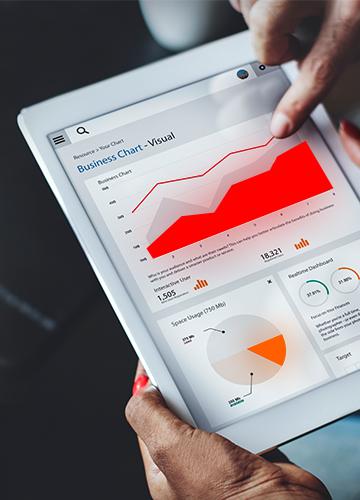Measuring Success with Google Analytics
Making sense of Google’s detailed analytics software and using it to your benefit
The first requisite of any successful business in the technological age is a functioning website - there are many that will even use their site as a central hub to sell their products or services. 50 million websites use Google Analytics globally – a multifaceted and free web analytic tool offered by Google to help analyse website traffic.
In this article, we’ll answer the question: what is Google Analytics? When used correctly, Google Analytics can act as an effective tool to support your online business and any future online endeavours.
Page Views Are Important
The first metric you should use is page views. Looking at the number of page views is a simple and effective way to gauge the popularity of your content. As well as being one of the most important statistics, it’s also the easiest to understand - a higher page view number signifies greater popularity.
Be sure to make use of these numbers, as they will ultimately make the management and organisation of your website much simpler. Remember: categorizing and designating your landing pages in order of relevance will further improve your SEO and clarify your future Sales strategy.
Optimize Site Speed and Mobile Friendliness
The speed and mobile-friendliness of your website are two critical factors that can dictate the future of your business and should be prioritised in your sales strategy. Fortunately, you can easily find these metrics using Google Analytics!
- Mobile-Friendliness
Cross-platform optimization is essential to conducting business online. Nowadays, the functionality of your website on ALL platforms is the key to business longevity and customer retention. You can access this data in Google Analytics to check how your site is performing on an average user’s mobile, tablet or desktop.
There are examples of Digital marketing companies in Dubai that will prioritize cross-platform optimization above all other concerns.
2) Site Speed
We’ve already looked in detail at the effects site speed can have on your business (see dedicated article). To recap, Google uses site speed as a ranking system which will ultimately place your website higher or lower on the list of relevant searches.
User experience is of critical importance to Google; If your website takes longer to load than your competitor, Google will punish you by ranking your page lower in SERPs and instead drive traffic to other sites. Use Google Analytics to optimize or remove slow pages.
Rules of Engagement…
User engagement can be gauged in a number of ways including, but not limited to CTA interaction, scroll depth and bounce rate. These key performance indicators (KPI) are crucial metrics that require constant attention from website administrators, as they provide an accurate description of your website’s health and can dictate your future sales strategy.
1) Video engagement
Creating and editing video content from scratch is time-consuming and expensive. Especially if users are simply ignoring said content. Google Tag Manager can be implemented to track your video engagement and analysed with Google Analytics. This will tell you whether the content is worth the cost.
2) CTA interaction
With website analytics, we have gained the ability to track user engagement across the CTA buttons. Tracking CTA buttons will tell us where the users are on the page. Gaining this insight can lead to an increase in the productivity of your marketing funnel – we looked at this in detail in our e-shop conversion article. (See article)
3) Bounce rate
Bounce rate measures the percentage of users who leave immediately or ‘bounce’ after viewing one page from your website.
Google uses bounce rate as a contributing factor towards your page ranking. Someone who clicks the back button soon after accessing your site suggests an unfulfilled search query to Google – so make sure your content is up-to-date and relevant!
4) Scroll depth
Scroll depth is a metric that simply describes how far a user scrolls on any webpage. This will let you know if site visitors are scrolling far enough and seeing the content that you want them to see. Analyse scroll depth to help with the organisation of your content.
There are two ways to do this: Implement a scroll depth trigger via Google Tag Manager or add anchor points at various page intervals to determine whether a user reached the content.
Wrap Up
Success can be quantified and categorized in web development. With the help of Google Analytics, you can paint a very accurate and detailed picture of your online business.
It’s a powerful tool and it may take a specialist to successfully navigate the nuanced and technical language, but with practice and patience, you’ll eventually get the hang of it!

